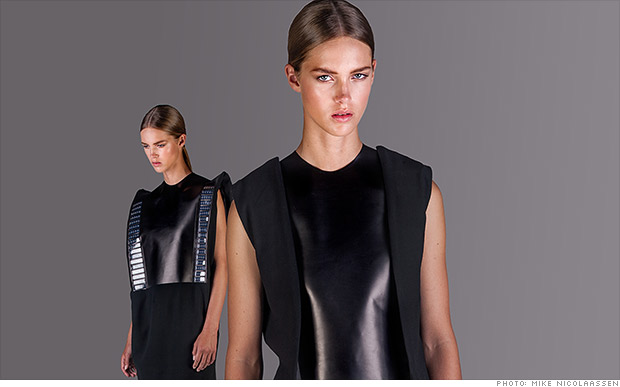With transhumanism becoming more popular, the movement will spread to more mediums than computing and medicine. Fashion is one of these mediums. In my last article dealing with transhumanist fashion, I laid out a simple rubric as to what how a transhumanist can look stylish and sophisticated in an evolving world. Within transhumanist fashion, or h+ couture, form and function are important. If looks good but has no function, then it isn’t worth your time. If you’re spending three digits on a new bag, it better be able to charge your device too. With this in mind, there are some examples of h+ couture and how you can use these items to look cutting-edge and amazing.
One garment style that is becoming increasingly popular is the solar dress. While some are seeing FitBits and Galaxy Gear smartwatches as “last year,” there are designers that are experimenting with ways that our clothes can do more than keep us warm. “Anything that you wear on your body is going to need designing and a clear understanding of aesthetics,” said Nick Spencer, senior practice director at ABI Research. “Expertise in user interfaces and connectivity comes from the consumer electronic world, and style and materials from the fashion world.” This is where designers are beginning to experiment with solar technology and apparel.
Pauline van Dongen, a Dutch designer, is one such individual who is working with this idea. In 2013, she created a wool and leather shift dress with 72 solar cells that were able to convert sunlight into electricity to be used for charging mobile devices. Two hours of sunlight can recharge a smartphone using a cord integrated into the dress. van Dongen hopes to introduce a retail line of wearable solar clothes. “It’s important to raise awareness and to show people the potential of solar cells in clothing…that it will transcend the realm of gadgets,” said van Dongen. “Several solar cell manufacturers have become more aware of the potential of their technology for textiles, which is an exciting development.”
As fashion is becoming a fertile place for companies like Intel to make a sound investment, one cannot ignore the advancements made with accessories. Naomi Kizher, an Israeli graduate student, has been designing jewelry that harnesses the body’s energy to generate electrical power. Her little creations work by inserting the needles into the wearer’s skin, where blood flow would turn a small wheel within the device. This allows for electricity to be generated. Even though this device has some creep factor to it, some modifications could be made to where the device could be made painless and more comfortable for people that have needle issues.
Now then, the idea of “smart apparel” is young and still has time to develop. I do see these technologies and design ideas to be worthwhile, but these ideas still need to be tweaked before they become mainstream. For example, the dress itself has some issues. From the photo provided, it is a good example of function but lacks form. A good dress should emphasize the wearer’s silhouette, where it is shown here to be too baggy and lacking color. It appears to draw attention to either the face or the panels shown on the sides. It is a good idea, but I would recommend it being tailored and given some color. I would at least suggest some accents on the sides, but I digress.
With tech companies seeing room to invest in smart apparel and e-textiles, transhumanists can see this as the oncoming signs for h+ couture becoming a relevant topic. Soon, a man can wear a suit with stylish solar panels stitched into the blazer and a woman could wear jewelry that harnesses the power of their body to power their electronics. Soon, the market will be filled with clever wearables and solar dresses and transhumanists will look stylish for the Singularity.
Hero image obtained from: http://money.cnn.com/2014/09/08/smallbusiness/future-fashion-tech/

1 Pingback